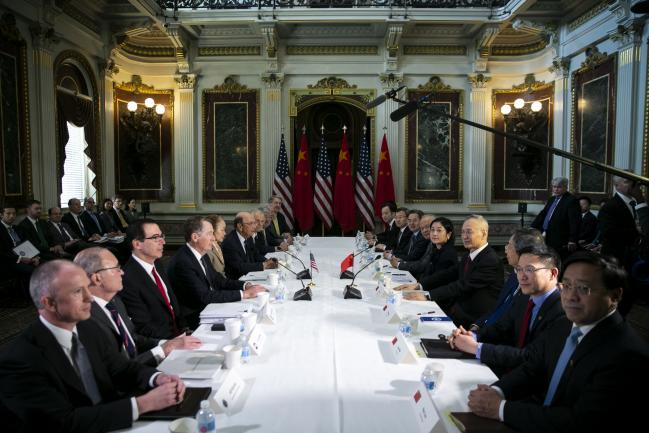(Bloomberg) -- The U.S. and China are close to a trade deal that could lift most or all U.S. tariffs as long as Beijing follows through on pledges ranging from better protecting intellectual-property rights to buying a significant amount of American products, two people familiar with the discussions said.
Chinese officials made clear in a series of negotiations with the U.S. in recent weeks that removing levies on $200 billion of Chinese goods quickly was necessary to finalize any deal, said the people, who weren’t authorized to talk publicly about the deliberations. That’s the amount the Trump administration imposed after China retaliated against the U.S.’s first salvo of $50 billion in tariffs that kicked off the eight-month trade war.
One of the remaining sticking points is whether the tariffs would be lifted immediately or over a period of time to allow the U.S. to monitor whether China is meeting its obligations, the people said. The U.S. wants to continue to wield the threat of tariffs as leverage to ensure China won’t renege on the deal, and only lift the duties fully when Beijing implemented all parts of the agreement.
As part of the ongoing talks, the U.S. asked the Chinese not to retaliate or bring World Trade Organization cases in response to U.S. tariffs that could be imposed to enforce the deal, according to a person familiar with the negotiations.
Dates for a summit between President Donald Trump and counterpart Xi Jinping have yet to be agreed, according to officials from both countries who declined to be named. The Wall Street Journal, which reported earlier that the U.S. and China were close to finalizing a trade pact, reported the summit could happen around March 27.
Plans for a signing ceremony have been complicated by Xi’s need to lead China’s annual National People’s Congress and to make other foreign trips.
Asian stocks rose with U.S. futures, and the yuan and Australian dollar advanced in early Asian Monday trading.
China’s Offer
China is offering to lower tariffs on U.S. farm, chemical, auto and other products, the Journal said, citing people familiar with the situation. Specifically, China would buy $18 billion in natural gas from Houston-based Cheniere Energy Inc., one of the people familiar with the matter said.
As part of a deal, China is pledging to speed up the timetable for removing foreign-ownership limitations on auto ventures, and to reduce tariffs on imported vehicles to below the current rate of 15 percent, the newspaper reported.
A senior administration official cautioned on Sunday that a decision had not yet been made over lifting the U.S tariffs. The official also said a debate was continuing inside the administration with Trump unlikely to make a decision before a deal was closer to being done, likening to situation to the debate over what to do with U.S. sanctions in the lead-up to last week’s summit with North Korea’s Kim Jong Un.
Asked during a congressional hearing last week whether a deal would see a lifting of U.S. tariffs, Robert Lighthizer, the China hawk now leading the talks with Beijing, would say only that was China’s desire.
Bloomberg reported Friday that the U.S. and China were close to finalizing a trade deal.
Trump and members of his economic team have has sounded optimistic about the chances for sealing a deal. And U.S. stocks have rebounded from their worst December since the Great Depression on signs the world’s two largest economies are resolving their trade differences without further escalation.
Truce Extended
Citing progress toward a deal, Trump last week delayed a planned increase of tariffs on Chinese imports to 25 percent, from 10 percent, that was scheduled to take effect March 1.
On Friday, Trump said he demanded Beijing, in response to his tariff delay, immediately remove all duties on U.S. agriculture products.
The Chinese have offered to ramp up purchases of American goods by $1.2 trillion over six years, according to a person familiar with the matter. It’s still unclear how Beijing would follow through on those purchases if retaliatory tariffs remained in place and other trading barriers aren’t removed, the person added. China bought $130 billion in U.S. goods in 2017, according to U.S. figures.
After several rounds of face-to-face meetings between U.S. and Chinese officials since last year, the sides are now in regular contact via phone and video-conference to hammer out the details of a deal.
(Updates with no settled date for Xi-Trump meeting in fifth paragraph.)


